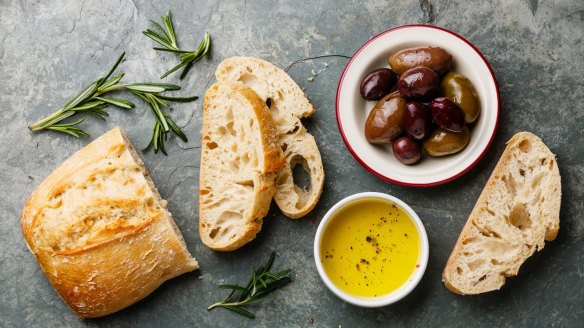How to brine your own olives at home

With olive season almost upon us, I'm keen to brine my own. What's the best method? A. Thomson
When we bought our house I planted an olive tree in the front garden. I used to be annoyed by an old Greek lady who leant over the fence and helped herself to my olives. She died a year or so ago and now the residents of the massive newly constructed apartment building look at my olive-laden tree in bewilderment. They stop, lean over the fence, pick one, take a bite then wince with the overwhelming bitterness. I have tried lots of methods with fairly similar results. You want to encourage the development of lactic fermentation without the olives going off.
Pick your olives and wash them, then place them in a large bucket or tub. Cover with water. Cover with a cloth. Leave in the laundry, shed or disused sauna. Drain and refill with water daily. After two weeks pour into a large jar and cover with brine. Make this by dissolving 300g of salt in five litres of water. Pour the brine over the olives, seal and leave in a cool dark place for three or so months. They should be soft. Drain. Pour over with a litre of wine vinegar and leave overnight. Drain. Add some pieces of lemon, fennel seeds and cover with olive oil. Seal. Leave for a month. Serve the olives with a glass of wine or use in cooking.

I love the type of beetroot found on hamburgers. Is it possible to make it at home? L. Hartley
Yes. But have your tried grating raw beetroot and mixing it with raw carrot and a handful of sultanas and dressing with oil, vinegar and salt? It is very delicious. Makes you feel good. Or have you slow-roasted a whole beetroot for an hour or so until soft, then peeled it and served it with goat's curd and toasted walnuts? I wish you would. But no. You're asking for a recipe to make this wonderful nutrition-packed vegetable taste like bloody tinned beetroot. It pains me to oblige but here's how. Wash and peel your beetroots and slice into 4mm thick rings. Pack into a small, wide sterilised glass jar – like the jars used for the salsa dip you stuff corn chips into. Combine 750ml water, 250ml white malt vinegar, 200g sugar, 25g salt and one teaspoon mustard seeds in a saucepan and bring to the boil then cool. Pour brining liquid over the beetroot to the rim and seal with the lid. Place in large pot. Cover jar with water, place over medium heat and barely simmer for one hour. Remove from heat. Carefully tighten the lids. Allow to cool and store in the pantry. They are now pasteurised and will last in the pantry for up to a year. To serve, place a couple of slices inside a burger. They will, inevitably, slip out and stain your T-shirt.
Send your vexing culinary conundrums to brainfood@richardcornish.com.au or tweet to @Realbrainfood.
Brain Food by Richard Cornish is out now from MUP (RRP $19.99, eBook $11.99).
Appears in these collections
- More:
- Food
- Brain food
